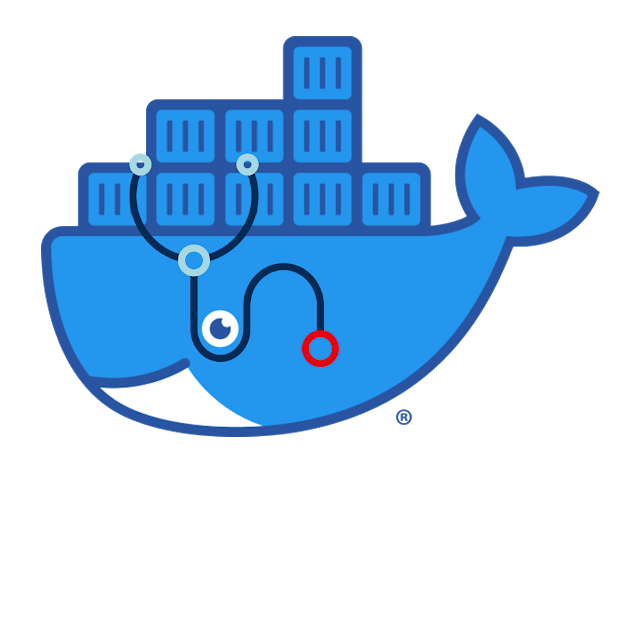DockerENT – The Only Open-Source Tool To Analyze Vulnerabilities And Configuration Issues With Running Docker Container(S) And Docker Networks

DockerENT is activE ruNtime application security scanning Tool (RAST tool) and framework which is pluggable and written in python. It comes with a CLI application and clean Web Interface written with StreamLit.
DockerENT has been designed keeping in mind that during deployments there weak configurations which may get sticky in production deployments as well and can lead to severe consequences. This application connects with running containers in the system and fetches the list of weak and vulnerable runtime configurations and generates a report. If invoked through CLI it can create JSON and HTML report. If invoked through web interface, it can display the scan and audit report in the UI itself.
How to Run
TL;DR
In hurry to test this? Download the latest stable REL from PyPi and run the Web App, everything else is intuitive.pip install DockerENT
Then run the application like:DockerENT -w
Thats it.
Run the latest master
DockerENT has been designed to keep simplicity and usability in mind. Currently you just have to clone the repository and download dependencies. Once the dependencies are installed in local system we are good to run the tool and analyse the runtime configurations for running containers.
# Download and setup
git clone https://github.com/r0hi7/DockerENT.git
cd DockerENT
make venv
source venv/bin/activate
# Run
python -m DockerENT --help
usage: Find the vulnerabilities hidden in your running container(s).
[-h] [-d [DOCKER_CONTAINER]] [-p [DOCKER_PLUGINS]]
[-d-nw [DOCKER_NETWORK]] [-p-nw [DOCKER_NW_PLUGINS]] [-w]
[-n [PROCESS_COUNT]] [-a] [-o [OUTPUT]]
optional arguments:
-h, --help show this help message and exit
-w, --web-app Run DockerENT in WebApp mode. If this parameter is
enabled, other command line flags will be ignored.
-n [PROCESS_COUNT], --process [PROCESS_COUNT]
Run sca ns in parallel (Process pool count).
-a, --audit Flag to check weather to audit results or not.
-d [DOCKER_CONTAINER], --docker [DOCKER_CONTAINER]
Run scan against the running container.
-p [DOCKER_PLUGINS], --plugins [DOCKER_PLUGINS]
Run scan with only specified plugins.
-p-nw [DOCKER_NW_PLUGINS], --nw-plugins [DOCKER_NW_PLUGINS]
Run scan with only specified plugins.
-d-nw [DOCKER_NETWORK], --docker-network [DOCKER_NETWORK]
Run scan against running docker-network.
-o [OUTPUT], --output [OUTPUT]
Output plugin to write data to.See this quick video to get started with.


Features
- Plugin driven framework.
- Use low level docker api to interact with running containers.
- Clean and Easy to Use UI.
- Comes with 9 docker scan plugins out of which, 6 plugins can audit results.
- Entire list : Docker Scan Plugins
- Framework ready to work docker-networks.
- Entire list : Docker Network Scan plugins
- Output plugins can write to
fileandhtmlsinks. - The only open source interactive docker scanning tool.
- Can run plugins in parallel.
- Under active development
.
How to Create your own Plugin.
- Have some idea to perform runtime scan.
- Copy the same file to create your
demoplugin.
cp DockerENT/docker_plugins/docker_sample_plugin.py DockerENT/docker_plugins/docker_demo_plugin.py- Just make sure, you maintain following structure.
_plugin_name = 'demo_plugin'
def scan(container, output_queue, audit=False, audit_queue=None):
_log.info('Staring {} Plugin ...'.format(_plugin_name_))
res = {}
result = {
'test_class': {
'TEST_NAME': ['good']
}
}
res[container.short_id] = {
_plugin_name_: result
}
# Do something magical.
_log.info('Completed execution of {} Plugin.'.format(_plugin_name_))
'''Make Sure you put dict of following structure in Q.
{
'contiainer_id': {
'plugin_name': {
'test_name_demo1': {
resultss:[]
},
'test_name_demo2': {
results: []
}
}
}
}
'''
output_queue.put(res)
if audit:
_audit(co ntainer, res, audit_queue)
def _audit(container, results, audit_queue):
'''Make Sure to add dict of following structure to Audit Q
res = {
"container_id": [
"_plugin_name_, WARN/INFO/ERROR, details"
]
}
'''
# Magical logic to perform Audit.
audit_queue.put(res)- Thats it. Still confused, Explain me the idea in Issues and will review and help you out, or we may end up working on it together.
- This plugin will automatically come to drop down in UI.
Easy right. - Sit back and eval results.
Plugins Features:
| Plugin Name | Plugin File | Feature | Audit |
|---|---|---|---|
| CMD_HISTORY | File | Identify shell history | Root history and User shell history |
| FILESYSTEM | File | Identify RW File Systems | If RW file systems are present. |
| NETWORK | File | Identify Network state | Identifies All mapped ports. |
| PLAINTEST_PASSWORD | File | Identify password in different files | |
| SECURITY_PROFILES | File | Identify Weak Security Profiles | List Weak security profiles. |
| USER_INFO | File | Identify user info | List permissions in passwd and other sensitive files |
| SYSTEM_INFO | File | Identify docker system info | No Audit |
| FILES_INFO | File | Identify world writeable directories and files | List all such files. |
CLI interface
Pros
- Rich Logging interface, can help in easy debugging through extensive debug logs.
- Can run in parallel, just pass
-n <count>, to specify the processors in parallel. - Can dump output in
JSONandHTMLfile.
Cons
- Audit output is not dumped to file.
- Selecting multiple specific dockers is pain.
UI Interface
Pros
- Clean, and easy to use UI.
- Everything at one single page.
- Ease of selecting multilpe docker images, multilpe plugins and multilpe docker-networks.
- Audit report present.
Cons
- Logging interface not Rich.
JSONreports are bulky.- Rely on third party lib StreamLit, all issues with framework are inherent.
Help Make this tool better
- Create a PR, Issues are more than welcome.
- Try it, test it and enhance it.
If you like the site, please consider joining the telegram channel or supporting us on Patreon using the button below.


![[KILLSEC] - Ransomware Victim: Nationwide Legal 5 image](https://www.redpacketsecurity.com/wp-content/uploads/2024/09/image-300x300.png)